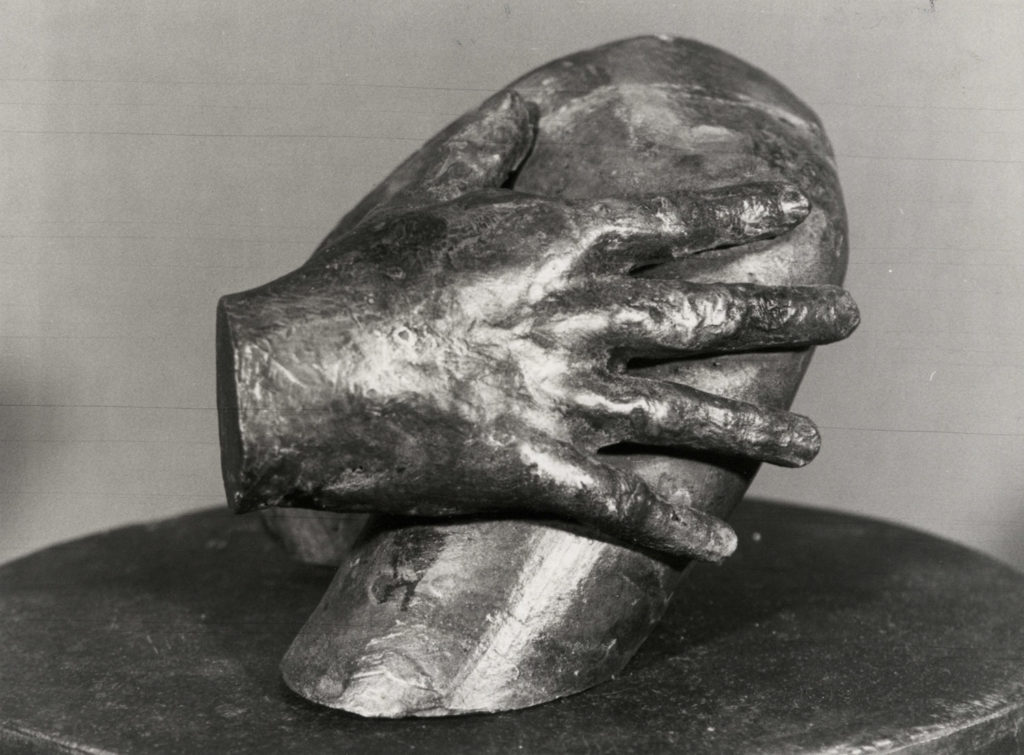OTHER VENUES Sarjeant Gallery, Whanganui, 12 February–28 March 1982; Govett-Brewster Art Gallery, New Plymouth, 9 June–4 July 1982; Waikato Art Museum, Hamilton, 19 July–15 August 1982; Auckland City Art Gallery, 1 September–3 October 1982; Rotorua Art Gallery, 18 October–21 November 1982; Manawatu Art Gallery, Palmerston North, 1–27 February 1983; Robert McDougall Art Gallery, Christchurch, 18 March–24 April 1983; Southland Museum and Art Gallery, Invercargill, 11 May–19 June 1983; Suter Art Gallery, Nelson, 5 July–7 August 1983; Dowse Art Museum, Lower Hutt, 31 August–2 October 1983 SPONSORS New Zealand Art Gallery Directors Council, QEII Arts Council PUBLICATION essays Hamish Keith, Tony Green
Coinciding with its first anniversary, Greer Twiss: A Survey 1959–1981 is the first survey show the Gallery organises. Apart from Scale Shift (1974), his large-scale commissioned work for the Todd Motors courtyard, this is the first time Twiss’s sculpture has been seen in Wellington.
Twiss is born in Auckland in 1937. He attends Elam School of Fine Arts from 1956 to 1959, where he teaches himself bronze casting. After graduating, he teaches art at Tamaki Intermediate School for four years, while making sculpture and pottery—and puppets for TV (puppetry was a childhood passion). In 1965, a Queen Elizabeth II Arts Council Travel Grant, enables him to study foundry techniques in Germany, Italy, France, Holland, and Britain. Bronze casting becomes his signature medium. Returning to New Zealand in 1966, Swiss is appointed to the Elam staff, becoming Head of Sculpture in 1974.
The Survey includes fifty sculptures, plus working drawings and collages, organised chronologically by series. The earliest works—Welders and Standing Man (both 1959)—made when Twiss is studying at Elam, are among his first bronzes.
From the outset, Twiss is interested in the human figure and movement. In the early 1960s, his works are inspired by sport, from Handstand (1960) to the Acrobats and Athletes series (both 1962). In 1965, he combines groups of figures with banners, words, and slogans in his Protest series. Twiss says, 'There was no great emphasis on any one political statement—the series reflected the current issues without pushing any one.'
In London, he works at the Royal College of Art, where he begins his series Flag/Patriots, with figures lying under draped Union Jacks. The idea of painting his bronzes is partly influenced by the painted medieval sculptures he sees in Italy in 1966.
When he returns to New Zealand, he begins the pop-inspired Bikini Girls—cropped female forms. Several have painted shadows on their bases or cut-out shadows that take the place of bases. Red Legs II (1969) is Twiss’s first life-size sculpture; cast directly from actual legs. Their plastic shadow implies one source of light, while the lights of the gallery impose another. Twiss says, 'The cut-off is set up so that when you're standing close to the work, the legs almost become an extension of you.' Twiss refers to the series as ‘Frozen Frames’, referring to the way time is arrested or 'frozen' within a photo.
In 1974, he completes the commissioned bronze Karangahape Road Fountain. After this, Twiss shifts away from the figurative and narrative towards the literal. He stops placing sculptures on plinths, preferring the floor. The figure is reduced to parts (a hand in Touch, 1972) or implied (the glasses in Full Stop Clamp, 1974). He creates constructions depicting engineering-workshop paraphernalia at life-size. In Lead by 5 (1974), five shackles are linked by a lead that ends in a dog collar.
Twiss moves away from depicting the human figure to explore the language of barriers, supports, and screens, making the viewer the figurative element. Of his Tripods (1980), he says, 'The use of the tripods is ambiguous. They are too tall for human use, and the elements on top ... have no obvious function—yet the total aesthetic is utilitarian.’
Greer Twiss: A Survey 1959–1981 embarks on an extensive national tour.















































